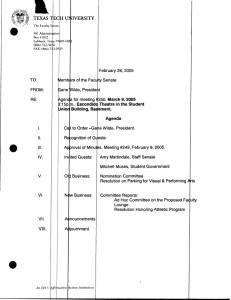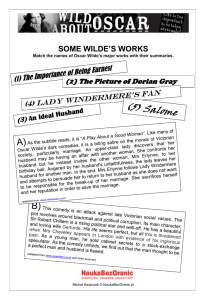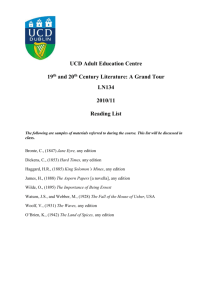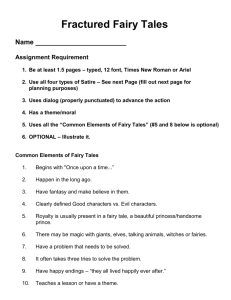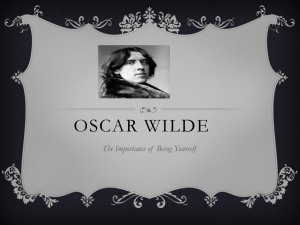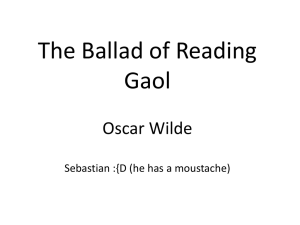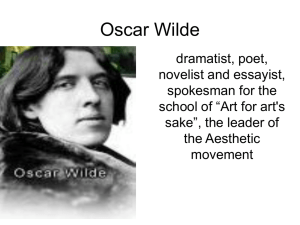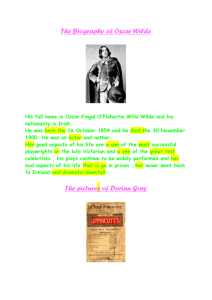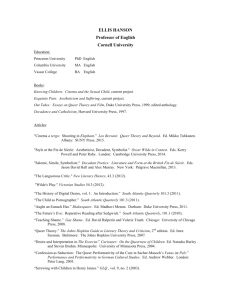The Happy Prince & Other Stories. By Oscar Wilde. Hbk, Collector´s
advertisement
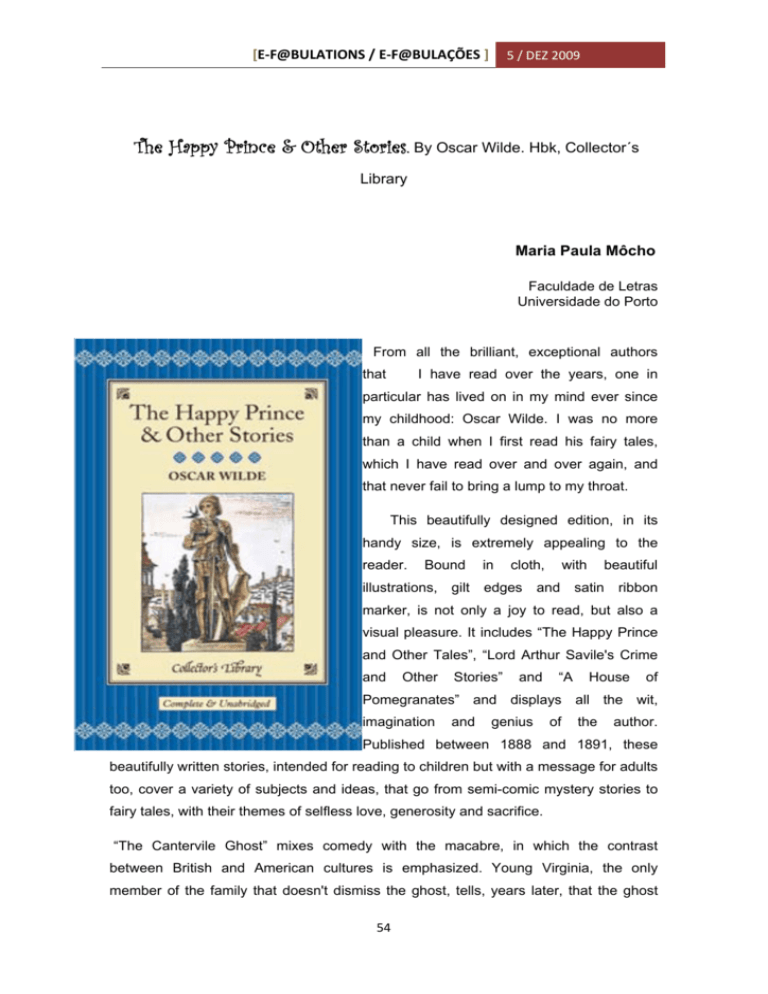
[E‐F@BULATIONS / E‐F@BULAÇÕES ] 5 / DEZ 2009 The Happy Prince & Other Stories. By Oscar Wilde. Hbk, Collector´s Library Maria Paula Môcho Faculdade de Letras Universidade do Porto From all the brilliant, exceptional authors that I have read over the years, one in particular has lived on in my mind ever since my childhood: Oscar Wilde. I was no more than a child when I first read his fairy tales, which I have read over and over again, and that never fail to bring a lump to my throat. This beautifully designed edition, in its handy size, is extremely appealing to the reader. Bound in cloth, illustrations, gilt edges with beautiful and satin ribbon marker, is not only a joy to read, but also a visual pleasure. It includes “The Happy Prince and Other Tales”, “Lord Arthur Savile's Crime and Other Stories” and “A House of Pomegranates” and displays all the wit, imagination and genius of the author. Published between 1888 and 1891, these beautifully written stories, intended for reading to children but with a message for adults too, cover a variety of subjects and ideas, that go from semi-comic mystery stories to fairy tales, with their themes of selfless love, generosity and sacrifice. “The Cantervile Ghost” mixes comedy with the macabre, in which the contrast between British and American cultures is emphasized. Young Virginia, the only member of the family that doesn't dismiss the ghost, tells, years later, that the ghost 54 [E‐F@BULATIONS / E‐F@BULAÇÕES ] 5 / DEZ 2009 taught her “what Life is, what Death signifies, and why Love is stronger than both”. In “The Birthday of the Infanta”, the little dwarf, quite unaware of his appearance and of the reason why the ‘infanta’ throws him a white rose, dies of a broken heart; in “The Nightingale and the Rose” the nightingale sacrifices his life by pressing his heart against a thorn, so that the student may give his beloved a red rose; “The Happy Prince”, once confined to his ivory tower and unaware of the reality of life, gives away all his goods in vain and reaps no gratitude or understanding, except from God. ”The Selfish Giant”, when he realizes how selfish he has been, is rewarded with Paradise by Christ himself; “The Young King” is a tale of a poor boy that, after indulging in wealth, power and beauty, soon realizes the misery, the sacrifice and the death behind the luxury and the riches and refuses all material things. And yet Wilde's stories are anything but depressing. They may still and will always be read with delight, thanks to his refined sense of humour, his wisdom and his craftmanship, which make up for the sadness or the cruelty of the themes. Written with poetic intensity and filled with his brilliant wit, they combine the morality of parables with true beauty, the evil and the ugly with the noble and the beautiful. Usually assumed as a medium to teach children appropriate behaviour , Wilde used this genre to give full expression to his philosophy of art and his satirical critique of English society . While the adult reader will see the philosophical meaning of each story, children will enjoy them as fairy tales. As Wilde explained, they were written “partly for children, and partly for those who have kept the childlike faculties of wonder and joy.” “The Happy Prince & Other Stories” is one of those books that we can read over and over again and never fails to stir emotions, no matter how old we are. To quote Wilde himself, “If one cannot enjoy reading a book over and over again, there is no use in reading it at all.” 55
